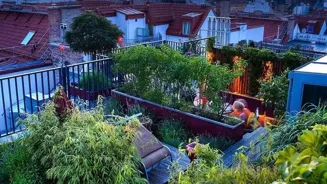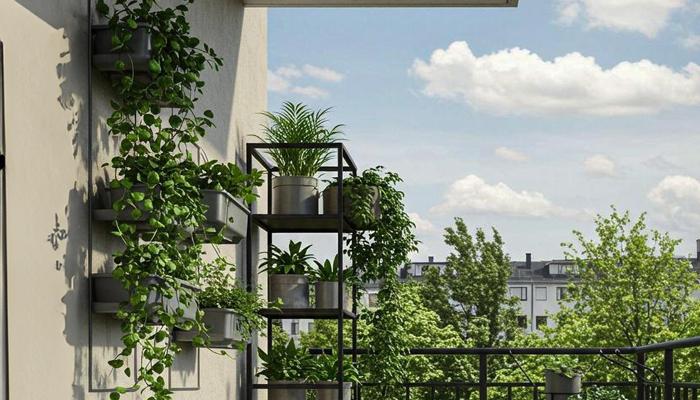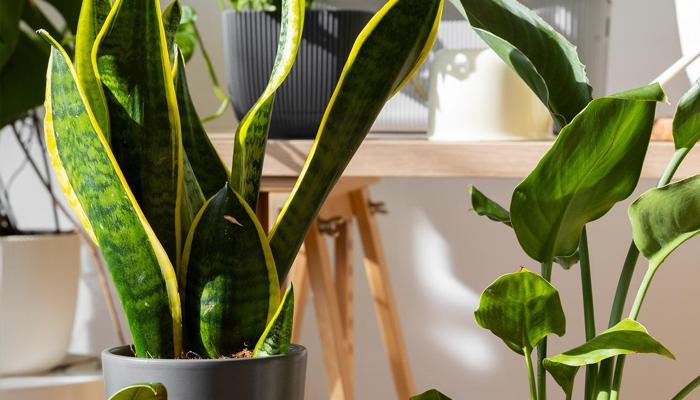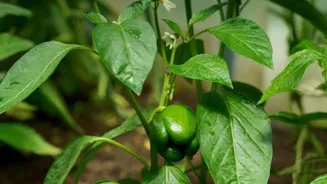Unlock the secrets to a flourishing indoor garden without a green thumb! Learn 7 tips for success. Read on!
Secrets to Creating a Thriving Indoor Garden – No Green Thumb Required!
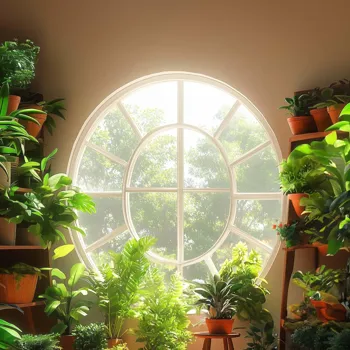
Anyone can create a thriving
indoor garden with seven secrets
Gardening, especially the indoor kind, might seem like a skill reserved for those with a magical 'green thumb.' But the truth is, anyone can cultivate a flourishing indoor garden, regardless of their past plant-related experiences.
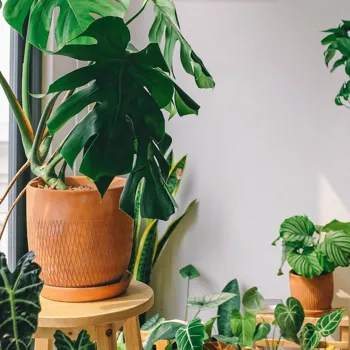
The key lies in understanding a few basic principles and implementing these simple secrets. So, ditch the notion that you're destined to kill every plant you touch, and get ready to transform your home into a green oasis.
We're about to reveal seven secrets that will empower you to create a thriving indoor garden, even if you think you have a black thumb! Let’s dive in and discover how you can bring the beauty of nature indoors, boosting your mood and purifying your air, all without feeling overwhelmed.
Successful indoor gardening hinges on understanding and providing proper light for plants
The first secret to successful indoor gardening is all about understanding and providing the right kind of light. Light is basically food for plants, and without enough of it, they simply can't thrive. Before you even think about buying a plant, take a good look at the light conditions in your home.
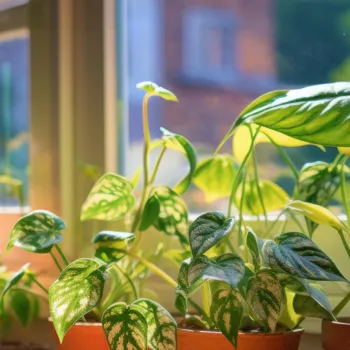
Which rooms get the most sunlight? Which areas are consistently shaded? Different plants have varying light requirements. Some, like succulents and cacti, crave bright, direct sunlight, thriving when placed near a south-facing window.
Others, like ferns and snake plants, prefer indirect or low light conditions, making them perfect for a north-facing room or a spot further away from the window.
If you're unsure about the light levels in your home, you can even use a light meter app on your smartphone to get a more accurate reading. Once you understand the lighting situation, you can choose plants that are well-suited to your environment.
Remember, forcing a plant to grow in the wrong light is a recipe for disaster. If natural light is limited, don't worry! You can supplement it with grow lights.
These artificial lights come in various forms, from simple LED bulbs to more elaborate setups, and can provide your plants with the light they need to flourish, regardless of the weather outside. Choosing the right light is a simple choice to enhance the growth of the plants.
Master the art of watering to keep plants healthy; adjust based on plant type and environment
The second secret is all about mastering the art of watering. Overwatering is one of the most common mistakes new gardeners make, leading to root rot and ultimately, a dead plant. The key is to understand that different plants have different watering needs.
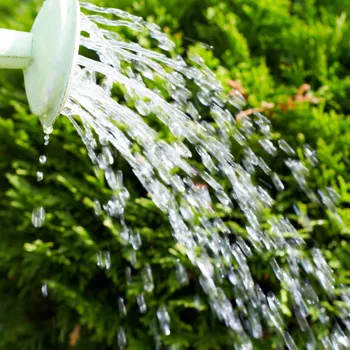
Some plants like to be kept consistently moist, while others prefer to dry out completely between waterings. Before you water, always check the soil moisture. Stick your finger about an inch or two into the soil. If it feels dry, it's time to water. If it feels moist or wet, hold off.
When you do water, make sure to water thoroughly, until the water drains out of the bottom of the pot. This ensures that the entire root system is getting hydrated. However, avoid letting your plants sit in standing water, as this can lead to root rot.
Use pots with drainage holes and empty the saucer underneath the pot regularly. Also, remember that factors like temperature and humidity can affect watering frequency. During warmer months, your plants may need more water than during cooler months.
Similarly, plants in dry environments will need more frequent watering than plants in humid environments. Pay attention to your plants and adjust your watering schedule accordingly. Observing your plants is very important.
Choose the right pot and soil for healthy plants
The third, and very important, secret involves picking the perfect pot and soil. The container your plant lives in plays a vital role in its overall health and well-being. Choose a pot that is the right size for your plant.
A pot that is too small will restrict root growth, while a pot that is too large may retain too much moisture, leading to root rot. When repotting, generally choose a pot that is only slightly larger than the previous one. Also, ensure that your pot has drainage holes!
This is essential for preventing waterlogging and root rot. Terracotta pots are a great choice because they are porous, allowing the soil to breathe and dry out more quickly. Plastic pots are also a good option, but be mindful of overwatering.
The type of soil you use is just as important as the pot. Avoid using garden soil, as it is often too heavy and dense for indoor plants. Instead, opt for a well-draining potting mix specifically formulated for container gardening.
These mixes typically contain a combination of ingredients like peat moss, perlite, and vermiculite, which provide good drainage and aeration.
For certain plants, such as succulents and cacti, you may want to use a soil mix that is specifically designed for them, as it will provide even better drainage. The kind of soil you choose for your plant holds great importance.
Feed plants regularly with proper fertilization for healthy growth
The fourth secret is to feed your plants regularly. Just like humans, plants need nutrients to grow and thrive. While potting mixes contain some nutrients, these are quickly depleted as the plant grows. Therefore, it's important to fertilize your plants regularly.
You can use a liquid fertilizer, a granular fertilizer, or even a slow-release fertilizer. Follow the instructions on the fertilizer packaging carefully, as over-fertilizing can be just as harmful as under-fertilizing.
During the growing season (spring and summer), you can fertilize your plants every two to four weeks. During the dormant season (fall and winter), you can reduce the frequency of fertilization or stop altogether.
Observe your plants for signs of nutrient deficiencies, such as yellowing leaves or slow growth. If you notice any of these signs, it may be time to increase the frequency of fertilization or switch to a fertilizer that is higher in certain nutrients.
Be mindful of your plants and their requirements.
Maintain proper humidity levels for indoor plants
The fifth secret deals with maintaining proper humidity levels. Many indoor plants, especially those native to tropical regions, prefer higher humidity levels than are typically found in our homes.

Dry air can lead to problems like brown leaf tips, stunted growth, and increased susceptibility to pests. There are several ways to increase humidity around your plants. One simple method is to group your plants together.
As plants transpire, they release moisture into the air, creating a more humid microclimate. You can also place your plants on a pebble tray filled with water. As the water evaporates, it will increase the humidity around the plants. Another option is to use a humidifier.
Humidifiers come in various sizes and styles, and can be a great way to maintain consistent humidity levels throughout your home.
Misting your plants regularly can also help, but it's important to do this in the morning so that the leaves have time to dry before nightfall, which can prevent fungal diseases. Observing the leaves of your plants is important to understand the humidity requirements.
Indoor garden success: manage pests, diseases for healthy plants
The sixth secret to any successful indoor garden is pest and disease management. Even with the best care, indoor plants can still be susceptible to pests like aphids, spider mites, and mealybugs.
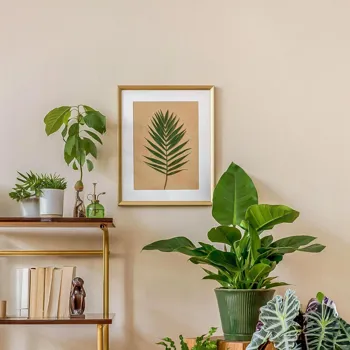
Regularly inspect your plants for signs of infestation, such as small insects on the leaves or stems, webbing, or sticky residue. The sooner you catch a problem, the easier it will be to treat. If you find pests, there are several ways to get rid of them.
You can try washing the plant with a strong stream of water, or wiping the leaves with a damp cloth. You can also use insecticidal soap or neem oil, which are both natural and effective options. Always follow the instructions on the product label carefully.
In addition to pests, indoor plants can also be affected by diseases, such as fungal infections. These diseases can be caused by overwatering, poor air circulation, or contaminated soil.
If you suspect that your plant has a disease, remove any affected leaves or stems and treat the plant with a fungicide. Improve air circulation by ensuring that your plants are not too crowded together. Prevention is always the best medicine. Regular inspection of your plant is very important.
Regular pruning promotes plant health and growth
The seventh and final secret is to prune your plants regularly. Pruning is the process of removing dead, damaged, or unwanted growth from a plant. It's not just about aesthetics; pruning can actually improve the health and vigor of your plants.
By removing dead or damaged leaves and stems, you can prevent the spread of disease and encourage new growth. Pruning can also help to control the size and shape of your plants, preventing them from becoming too leggy or overgrown.
Use clean, sharp pruning shears or scissors to avoid damaging the plant. When pruning, always cut at a 45-degree angle, just above a node (the point where a leaf or stem emerges). This will encourage new growth from that node. For flowering plants, pruning can also encourage more blooms.
Deadheading, which is the process of removing spent flowers, can stimulate the plant to produce more flowers. Do a regular check and this will do the trick. Pruning is the finishing step to keep your plant healthy.

